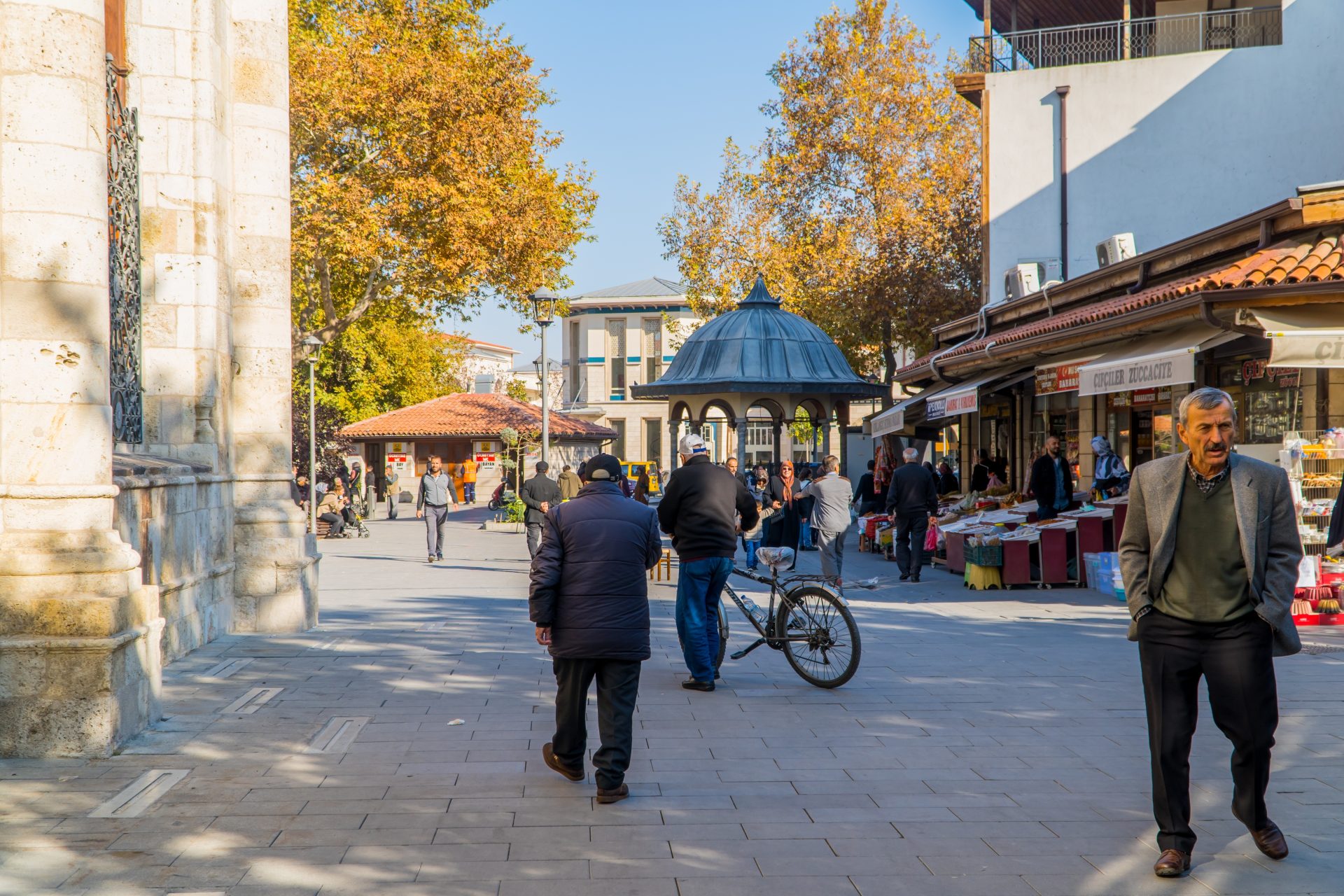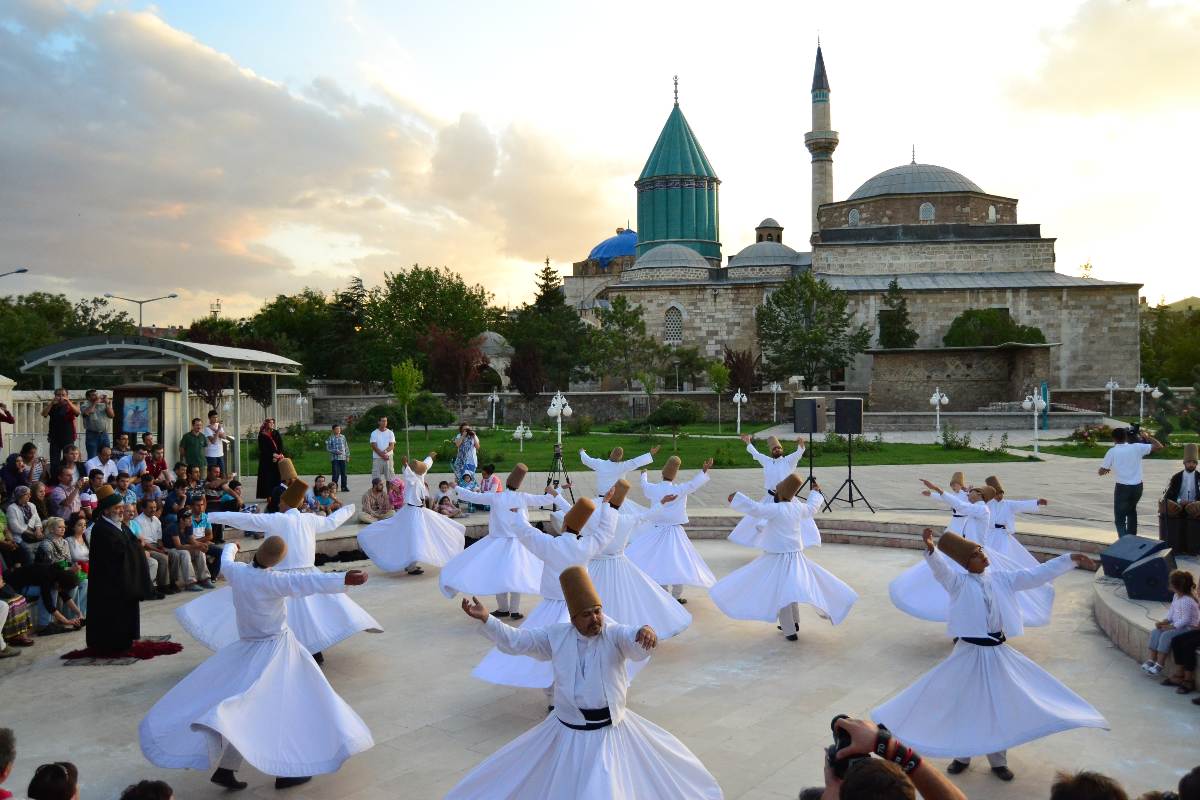Konya is a city that is not always part of the major tourist circuits… unfortunately, because its attractions are numerous and very authentic.
With a reputation for conservative bastion of religiosity and traditionKonya, this city opens up to modernity without renouncing its past and with a vocation to show it with enthusiasm to travelers who come here.
Therefore, on this page we tell you in depth why it is worth traveling to Konya or, at least, stop for a while if your route makes you pass through here on your way between Cappadocia and the coast.
Konya is located in the region of Anatolia region and is the capital of the homonymous province.a. It is located on a plateau (1,200 meters above sea level) halfway between Cappadocia and the Mediterranean and Turquoise coast.
Its size has grown considerably in the last few years, to well over 2 million inhabitants.
If you plan to visit Konya as part of a tour of Turkey, these are the distances distances you should take into account:
Given its altitude and distance from the sea, Konya has a very continentalized climate. very continentalized climate.
El invierno es muy frío, con jornadas gélidas y temperaturas negativas incluso durante el día.
Las precipitaciones, no obstante, son escasas, pero cuando tienen lugar pueden ser en forma de nieve.
In summer, on the other hand, temperatures are very high, above 30ºC in many cases.
In addition, the altitude of the city causes the radiation is very strong, which obliges the traveler to protect himself well from the sun, both skin and eyes.This obliges the traveler to protect his skin and eyes from the sun.
To reach Konya from other parts of Turkey and even from other countries, you have several options, which are listed below.
Konya has a small small airportused not only for passengers but also for military purposes.
In fact, this infrastructure (IATA code: KYA) was opened to the public in 2000 and its number of passengers is still far from the figures of other Turkish international airports: around one million travelers per year.
It is located a about 18 km from the city of the city.
The only domestic destinations with which it has direct connections are Izmir and Istanbul-Sabiha Gökçen.
Most of the international flights are seasonal: Copenhagen (Denmark), Amsterdam, Rotterdam (Netherlands), Stockholm (Sweden) and Düsseldorf (Germany).
If you plan to drive to Konya, you will find many options for access by highway, as they arrive here from all cardinal points:
If you prefer to know the approximate travel times from these and other cities in Turkey, you can consult this list:
In Konya there are two bus stationsone for long-distance lines (otogar Konya, about 7 km from the center) and another for shorter trips, with localities of the surroundings (Karatay station, more centrally located).
Due to its central location, the city has regular lines with the main cities of the country: Istanbul, Ankara and Izmir, and also with some renowned tourist destinations, such as Denizli (Pamukkale), Göreme (Cappadocia) and cities of the Aegean and Mediterranean coast, such as Antalya or Bodrum.
This is undoubtedly one of the best ways to get to Konya, as this city is integrated in the high-speed rail network. integrated in the high-speed railroad network.
Además, las dos líneas que llegan hasta aquí lo hacen desde las dos principales ciudades de Turquía (Estambul y Ankara):
For those traveling from the capital, Ankara, the trip takes about 1.5 hours.
From Istanbul, on the other hand, it takes about 4 hours and a half.
All this in the most comfortable trains, making it a most pleasant experience.
Daily departures are half a dozen from Ankara and about three from Istanbul.
In the future, it is also planned to extend the network, which will connect Konya with Antalya and Cappadocia, and that will be another tourist boost for this Central Anatolian city.
Because of its geographical location, the territory currently occupied by Konya was inhabited several millennia before our era by civilizations as important as the Hittites, the Phrygians, the Persians and the Romans. the Hittites, the Phrygians, the Persians and the Romans..
In the times of the latter, Konya was called Iconium or IconiumIts relative importance is demonstrated by the fact that it is mentioned in the New Testament (visit of Paul of Tarsus) and for being the birthplace of Thecla of Iconium (St. Thecla), venerated in many places of Christianity.
However, its most important moment came from the 11th century onwards. 11th centurycentury, when it came to play the role as the capital of the Sultanate of Rumwhich was the first political project of the Turkic (in this case, Seljuk) of what is now Turkey.
Harassed by the Crusaders, they managed to stabilize the terrain and expand to become a true Anatolian empire in the 13th century.
It is no coincidence that in this period of expansion and zenith, their most famous religious and folkloric expression emerged here: the gyrovagous dervishes.
For this reason and for being the cradle of the Seljuks, Konya is conceived as one of the most emblematic cities for the Turks.
Many of the buildings and monuments that can be visited today take us back to this key period in the history of the country.
Shortly after the decomposition of the Sultanate of Rum, the Ottoman Empire Ottoman Empire took its place and continued to care for its symbolism, promoting new mosques and infrastructure.
However, some foreign travelers who visited it in the 19th century describe it as a place in decline, although it was also the object of investments in sectors such as the textile industry and mining.
Already in the 20th century, Konya figured prominently in the Turkish War of Turkish War of IndependenceThe city was also the site of an important air base.
In 1923, as part of the exchange of populations between Greece and Turkey, the several thousand Greeks still living here were forced to leave.

Given the spiritual and traditional character of Konya, most places of interest to visit are related to religion and folklore.
Therefore, as many of them are sacred places, access may be restricted to those who do not profess Islam.
Undoubtedly, the great pole of attraction for Turkish and foreign travelers, for Muslims and non-Muslims alike, is the Mevlana MuseumThis building, whose origins date back to the thirteenth century, was the meeting place of the gyrovagous dervishes and houses the tomb of its great creator: Celaleddin Rumi (Mevlana).
For this reason, it has a sacred and pilgrimage character, considering this poet as a practically divine character.
Some of the highlights of the Mevlana Museum are the mausoleum, Mevlana’s tomb room (accompanied by those of other members of his personal circle), the kitchen (matbah) which is maintained as used by Mevlana himself, the dervish cells and the mosque (for worshippers only).
The mosques of Konya are also authentic jewels of history and architecture, as many of them date back to the Seljuk period, when this city reached its zenith as the capital of the Sultanate of Rum.
These are the most outstanding ones:
No less interesting are the madrasasThe mosques, that is, the Koranic schools where future imams and other personalities related to the religion study.
And like the main mosques, these are also historical and in many cases date back to Seljuk times.
And the advantage of these spaces is that they tend to have fewer restrictions for non-believers than in the case of mosques.
One of the most outstanding, that of Karatayis also a museum, which allows visitors to enjoy the exterior and the interior of this 13th century building, as well as its collection of ceramics, since it is also known as the Tile Museum.
Otra de las madrasas más bonitas es la de Sircalialso from the 13th century, with a spectacular door carved in stone, with pointed arch framed in alfiz.
On the other hand, in terms of cultural visits, the city’s museums occupy a prominent place, dedicated to different themes:

Again, some of the most interesting things to do in Konya are related to tradition.
In particular, witnessing a show of dervish whirling dervishes: although these mystical dances are performed In other cities in Turkey and even in the Muslim world, there is no more sacred and symbolic place to witness it than in Konya.
In December, a festival dedicated to it, which lasts several weeks, but it is also possible to witness it during the rest of the year at the Mevlana Cultural Center.
For those who want a more relaxed and even childish plan, there are some other options.
One of the most surprising is the Konya Tropical Butterfly GardenIt is an enclosure with a garden where a spectacular variety of butterflies brought from different latitudes coexist.
In total, there are thousands of specimens of about 45 different species.
Another interesting proposal that usually pleases the youngest visitors is the Museum of Science (Konya Bilim Merkezi in Turkish).
It is a multidisciplinary center where you can learn about and reflect on very basic aspects of science: from robotics to astronomy to anatomy and much more.
And not only does it feature immersive and interactive exhibits, but workshops are also organized.
Finally, if you have a vehicle to travel outside the city, the most interesting excursion is the one to the aforementioned Çatalhoyuk.
Este yacimiento arqueológico se encuentra a unos 48 km de la ciudad y su importancia radica en su antigüedad (VII milenio a.C) y en su récord: el de ser, según diferentes expertos, la primera ciudad del mundo.
Por ello, su visita debería ser obligada para los amantes de la historia.
Konya has a tourist information office, located in the Aslani Kisla Caddesi area.
You will find helpful staff in several languages and a wide range of maps, brochures and other information materials.
Konya is one of the few Turkish cities that has a tramway. tramwayand here it is presented as a useful and always available transportation option, as it runs 24 hours a day. 24 hours a day (although in the early morning they reduce their frequency).
In addition, its lines serve the most interesting places for tourists, such as the Mevlana Museum, the Mevlana Cultural Center, the bus station or Alaaddin Tepisi.
The city buses (dolmus) are the other public transport option for getting around Konya, with a much more branched network than the streetcars.
And for those cases in which an immediate displacement is needed or where such networks do not reach, the cab will be of great help.








